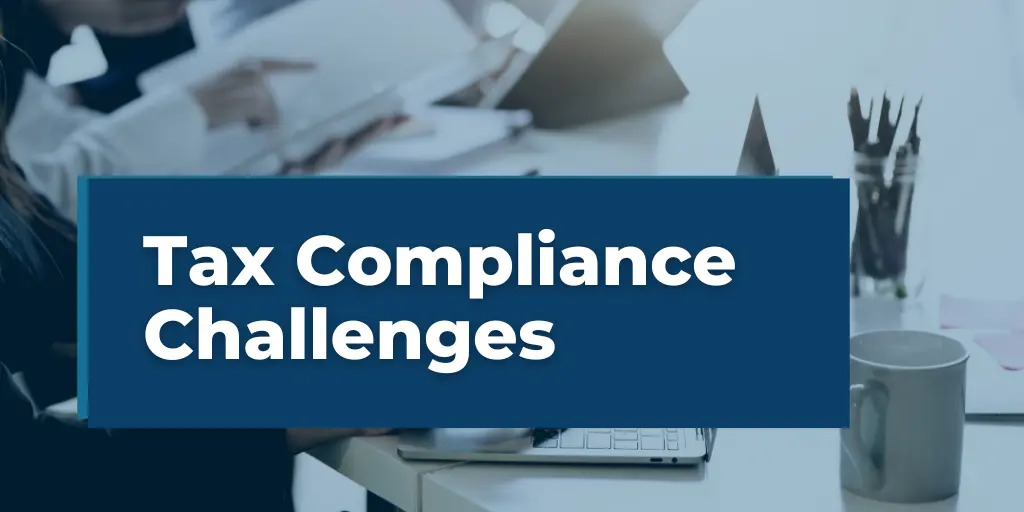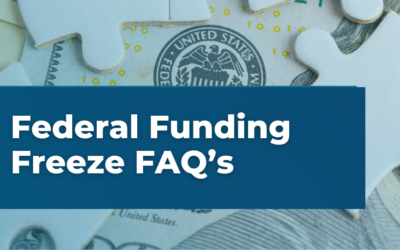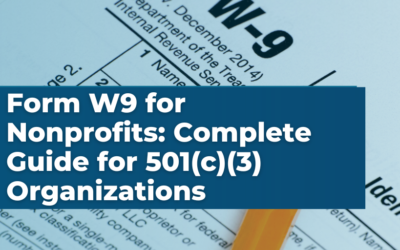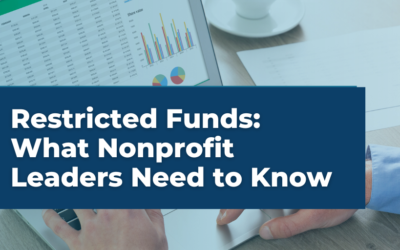In nonprofit management, generating sustainable funding is crucial for growth and making a significant impact. This goes beyond basic financial needs; it’s about enhancing your mission and reach.
As executive directors and CEOs, you play a key role beyond just overseeing operations. You are responsible for shaping vision and strategy, bridging the gap between ambitious goals and real results. Effective fundraising requires your leadership, creativity, and strategic thinking, from engaging donors to initiating innovative campaigns and fostering a philanthropic culture.
This guide is crafted for you, the leaders striving to make a difference. We focus on essential aspects like understanding your donor base, leveraging technology, telling your story effectively, and maintaining transparency. These strategies are vital tools for creating a sustainable and impactful future for your nonprofit.
Section 1: Understanding Your Donor Base
Identifying Your Donors: The Foundation of Effective Fundraising
Effective fundraising starts with identifying and understanding your donor base, including individuals, corporations, and foundations. Each type has unique motivations and engagement preferences.
- Individual Donors: Range from small contributors to major philanthropists, motivated by personal connections or ethical beliefs. Tailor communications to their interests and motivations.
- Corporate Donors: Contribute for CSR or mutual benefits. Identify businesses with CSR goals that align with your mission and understand how your nonprofit can offer them value.
- Foundations: Offer grants for specific projects or causes. Align your programs with their interests and demonstrate measurable impacts for funding opportunities.
Building Relationships: The Heart of Sustainable Fundraising
Once you’ve identified your donors, the next crucial step is building and maintaining strong relationships with them. This is about more than just securing a donation; it’s about creating a lasting bond that encourages ongoing support.
- Personalized Communication: Customize your communication to reflect the interests and motivations of your donors. A personal touch can make all the difference, whether it’s a tailored email, a phone call, or a handwritten thank-you note.
- Regular Updates: Keep your donors informed about how their contributions are making a difference. Regular updates about your programs, successes, and even challenges help in maintaining transparency and building trust.
- Donor Engagement: Involve your donors in your activities. This can range from inviting them to events, offering volunteer opportunities, or even involving them in program planning or feedback sessions. Making them feel like a part of your organization fosters a deeper connection.
- Stewardship Plans: Develop a stewardship plan for each type of donor. This could include regular check-ins, acknowledgment in publications, or special recognition events. Remember, a satisfied donor is more likely to be a repeat donor.
In summary, understanding and building relationships with your donors is not just a fundraising activity; it’s a foundational strategy for the growth and sustainability of your nonprofit.
Section 2: Diversifying Fundraising Channels
Multiple Revenue Streams: Ensuring Stability and Growth
Diversifying your fundraising sources is essential for robust fundraising, helping mitigate risks and ensuring a steady resource flow. This strategy not only stabilizes finances but also expands donor engagement. Key channels include:
- Individual Donations: Develop strategies to attract both one-time and recurring donations. Recurring donations, in particular, can provide a predictable income stream.
- Grants: Apply for grants from foundations, government bodies, and other organizations. Tailor your applications to align with the grantor’s objectives and demonstrate how your project fits their criteria.
- Events: Hosting fundraising events such as galas, auctions, or charity runs can be a great way to raise funds and increase visibility. These events also provide a platform to engage with your donors and community in a meaningful way.
- Online Campaigns: Utilize digital platforms for crowdfunding campaigns, social media fundraising, and email marketing. They are especially effective in engaging younger donors and can be a great way to share your story and impact.
- Corporate Partnerships: Developing partnerships with businesses can provide not just funds, but also valuable resources and expertise. This could include sponsorship deals, in-kind donations, or employee matching programs.
- Planned Giving: Encourage donors to leave a legacy through bequests, trusts, or annuities. Although these funds may not be immediately available, they can significantly contribute to your organization’s long-term financial health.
- Merchandise Sales: Selling branded merchandise can be a fun and creative way to raise funds. It also serves as a marketing tool, spreading awareness of your cause.
A diversified approach not only guards against financial ups and downs but also connects you with a broader supporter base, crucial for long-term sustainability.
Section 3: Leveraging Technology
Digital Fundraising Tools: Streamlining Your Efforts
In today’s digital era, using technology is critical for effective fundraising. Digital tools streamline processes, enhance donor engagement, and offer insights to refine fundraising strategies.
- Donor Management Systems: Essential for tracking donor information and activities, these systems enable targeted campaigns, automate communications, and improve relationship management.
- Online Donation Platforms: With the rise of online giving, these platforms are key for easy and secure donations. Ensure they are user-friendly and secure.
- Fundraising Software: This software supports managing campaigns, events, and grants, often including features like email marketing and event registration for efficient management.
- Data Analytics Tools: Analyze fundraising data for insights on donor behavior and preferences, helping to tailor strategies and outreach for greater impact.
Social Media Utilization: Expanding Your Reach and Engagement
Social media is an effective tool for nonprofits to boost visibility, engage audiences, and support fundraising. It’s particularly useful for reaching diverse and younger demographics.
- Content Strategy: Create content that resonates, sharing impactful stories and successes through various formats like videos, images, and infographics.
- Engagement: Build community by actively interacting with followers, responding to comments, and encouraging dialogue.
- Fundraising Campaigns: Utilize social media for fundraising, integrating tools available on platforms like Facebook and Instagram, and encourage sharing within networks.
- Influencer Collaborations: Partner with influencers who align with your mission. They can help amplify your message and reach a larger audience through their follower base.
- Monitoring and Analytics: Track social media performance to understand audience preferences and optimize your strategy.
Effectively using social media in your fundraising strategy enhances efficiency, widens your reach, and deepens donor engagement, significantly impacting your cause. By effectively leveraging digital tools and social media, you can transform your fundraising efforts and drive greater impact for your cause.
Section 4: Crafting a Compelling Story
Storytelling as a Tool: Connecting Hearts to Your Cause
Storytelling is a vital tool in nonprofit fundraising. Stories that resonate with your audience can transform passive listeners into active supporters and advocates for your cause.
- Personalize the Narrative: Share impactful stories of those affected by your work, highlighting challenges and your organization’s positive impact.
- Emotional Engagement: Use stories to evoke emotions, encouraging action and support.
- Authenticity: Keep stories genuine and respectful, building trust and credibility.
- Multimedia Use: Enhance stories with photos, videos, and audio for greater engagement.
Showcasing Impact: Demonstrating the Value of Contributions
Your donors want to know that their contributions are making a difference. Demonstrating the impact of their support is crucial in maintaining and growing donor engagement.
- Clear Outcomes: Communicate how donations are used and the resulting impacts, using testimonials, reports, or statistics.
- Transparency and Regular Updates: Be open about successes and challenges, and keep donors informed through regular updates.
- Visual Impact Representation: Use infographics, charts, and visual storytelling to depict the impact. Visual representations can often communicate complex data in a simple and effective way.
- Involve Donors: Where possible, show donors directly how their contribution is being used. Invite them to events, offer site visits, or share beneficiary letters and messages.
By effectively using storytelling, you not only raise funds but also build a community of engaged and committed supporters who feel deeply connected to your cause and its success.
Section 5: Regulatory Compliance and Transparency
Adhering to Laws: The Bedrock of Ethical Fundraising
Compliance with fundraising regulations is not just a legal obligation but a fundamental aspect of maintaining the integrity and reputation of your nonprofit. Adhering to these laws reflects your commitment to ethical practices, which is essential for building trust with your donors, beneficiaries, and the public.
- Understand and Follow Regulations: Familiarize yourself with the local, state, and federal regulations that apply to nonprofit fundraising. This includes registration requirements, reporting standards, and rules governing donor acknowledgment.
- Training and Education: Ensure that your staff, especially those involved in fundraising and donor communication, are trained and kept up-to-date on relevant laws and ethical practices.
- Transparent Record-Keeping: Maintain meticulous records of all fundraising activities, donations received, and their usage. Transparent record-keeping not only helps in regulatory compliance but also simplifies reporting and audit processes.
- Consult Legal Experts: Consider consulting with legal experts specializing in nonprofit law to ensure full compliance and to stay informed about any changes in legislation.
Financial Transparency: Cultivating Donor Trust
When donors see that their contributions are being managed responsibly, it reinforces their trust in your organization and encourages continued support.
- Clear Financial Reporting: Regularly publish detailed financial reports. This should include information on how funds are allocated and spent. Make these reports easily accessible to your donors and the public.
- Explain Fund Allocation: Clearly explain to your donors how their contributions will be used. If there are changes or deviations in fund allocation, communicate these transparently along with the reasons.
- Impact Correlation: Demonstrate how financial contributions directly correlate to the impact achieved. This can be through case studies, impact metrics, or beneficiary stories.
- Engage with Donor Inquiries: Be open and responsive to inquiries from donors regarding financial matters. Encouraging and addressing these inquiries can further enhance trust.
By prioritizing regulatory compliance and financial transparency, you not only safeguard your organization’s integrity but also foster a culture of trust and accountability.
Section 6: Engaging the Board and Volunteers
Engaging both your board of directors and volunteers in fundraising is essential for success. The board brings leadership, experience, and networks that can significantly amplify fundraising efforts, while volunteers provide the passion and dedication crucial for on-the-ground initiatives.
Board Involvement:
- Set Clear Expectations: Clearly define board members’ roles in fundraising, including leveraging networks, contributing personally, and advocating for the organization.
- Training and Resources: Equip board members with the necessary training and tools for effective fundraising participation, such as workshops on donor engagement and outreach resources.
- Utilize Networks: Encourage board members to use their professional and personal networks for fundraising, including hosting events and meeting potential donors.
- Regular Updates: Keep the board informed about fundraising goals, strategies, and progress, involving them in planning and decision-making to harness their expertise.
Volunteer Engagement:
- Identify Roles: Assign specific fundraising roles to volunteers, ranging from event organization to managing online campaigns and donor engagement.
- Training and Support: Provide volunteers with the training and support they need to be effective, including knowledge about your mission and communication strategies.
- Network Utilization: Motivate volunteers to use their networks for raising awareness and support, capitalizing on their enthusiasm and connection to your cause.
- Recognition and Feedback: Regularly recognize and appreciate volunteers’ efforts, and create avenues for their feedback and ideas, encouraging long-term commitment and innovation.
Incorporating both your board and volunteers in fundraising not only expands your reach but also deepens commitment to your organization.
Section 7: Evaluating and Adapting Strategies
Assessing Effectiveness: The Key to Strategic Fundraising
In the dynamic landscape of nonprofit fundraising, regularly evaluating the effectiveness of your strategies is essential. This ongoing assessment helps you understand what’s working, what isn’t, and how to allocate resources for maximum impact.
- Set Measurable Goals: Establish clear, measurable goals for each fundraising campaign or strategy. This could include targets for donation amounts, donor engagement, or event attendance.
- Use Data and Analytics: Utilize data and analytics to track and evaluate your fundraising efforts. Look at key metrics such as donation amounts, cost per dollar raised, donor retention rates, and conversion rates from various campaigns.
- Solicit Feedback: Gather feedback from donors, volunteers, staff, and board members. Their insights can provide valuable perspectives on the effectiveness and impact of your fundraising activities.
- Regular Reviews: Schedule regular review meetings to assess the progress and outcomes of fundraising strategies. These reviews should involve key stakeholders and be an opportunity for open discussion and analysis.
Regularly evaluate and adjust your fundraising efforts to stay effective and aligned with your organization’s goals, enhancing both potential and adaptability.
Conclusion
As we conclude our exploration of “Fundraising Strategies for Nonprofits,” remember the key pillars: understanding and engaging your donor base, diversifying fundraising channels, embracing technology, crafting impactful stories, adhering to regulatory standards, and involving your board and volunteers. Regularly evaluating and adapting these strategies is crucial for sustained success.
For further guidance, especially in managing the financial intricacies of your nonprofit, feel free to reach out to Velu. With expertise in nonprofit accounting, Velu can assist in aligning your financial strategies with your fundraising goals, ensuring a strong foundation for your organization’s growth and impact.





